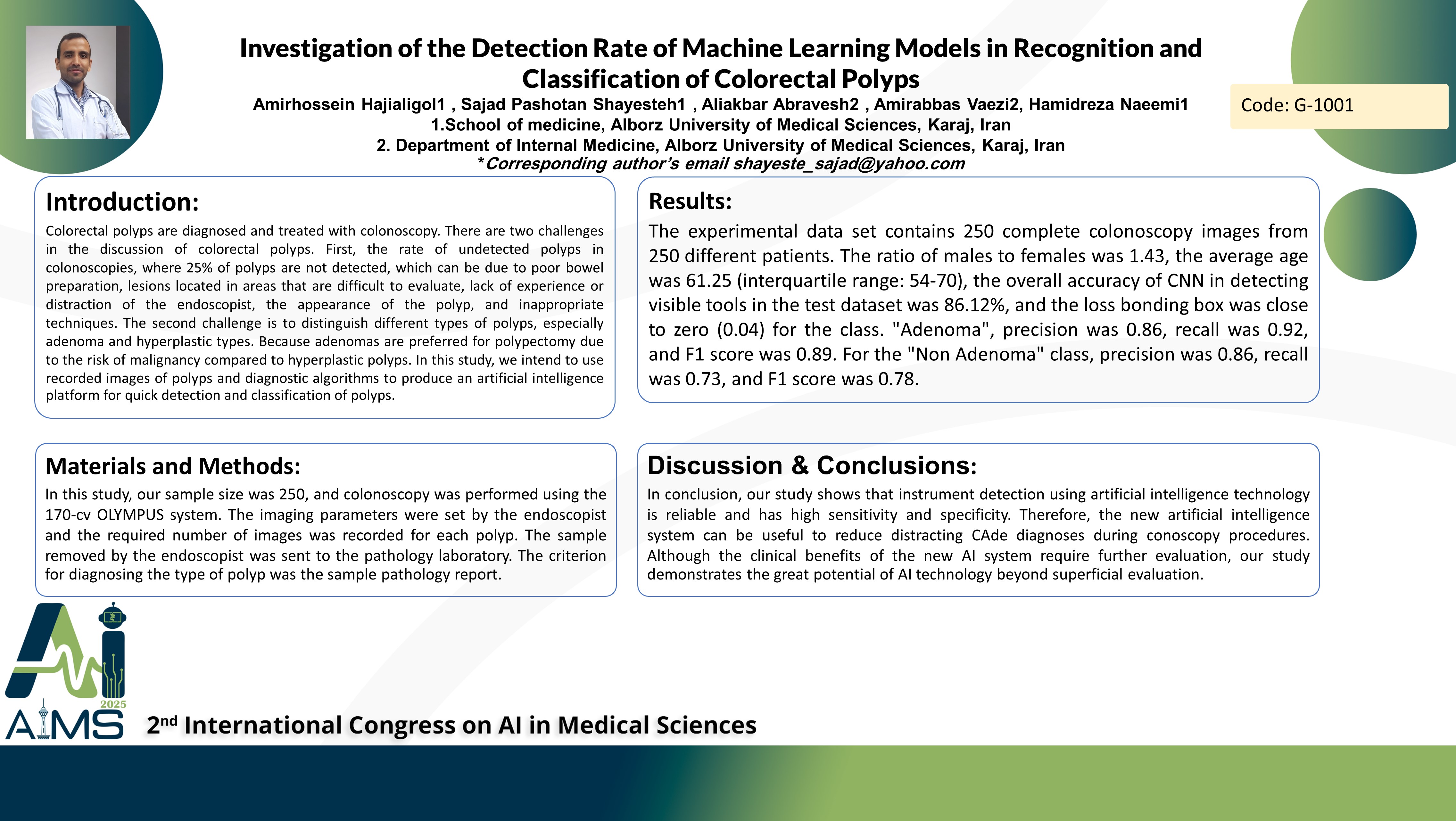بررسی قابلیت مدل های یادگیری ماشین در تشخیص و دسته بندی پولیپ های روده
کد: G-1077
نویسندگان: Amirhossein Hajialigol ℗, Sajad Pashotan Shayesteh *, Aliakbar Abravesh , Amirabbas Vaezi, Hamidreza Naeemi
زمان بندی: زمان بندی نشده!
برچسب: پردازش سیگنال های پزشکی
دانلود: دانلود پوستر
خلاصه مقاله:
خلاصه مقاله
Introduction: Colorectal polyps are diagnosed and treated with colonoscopy. There are two challenges in the discussion of colorectal polyps. First, the rate of undetected polyps in colonoscopies, where 25% of polyps are not detected, which can be due to poor bowel preparation, lesions located in areas that are difficult to evaluate, lack of experience or distraction of the endoscopist, the appearance of the polyp, and inappropriate techniques. The second challenge is to distinguish different types of polyps, especially adenoma and hyperplastic types. Because adenomas are preferred for polypectomy due to the risk of malignancy compared to hyperplastic polyps. In this study, we intend to use recorded images of polyps and diagnostic algorithms to produce an artificial intelligence platform for quick detection and classification of polyps. Method: In this study, our sample size was 250, and colonoscopy was performed using the 170-cv OLYMPUS system. The imaging parameters were set by the endoscopist and the required number of images was recorded for each polyp. The sample removed by the endoscopist was sent to the pathology laboratory. The criterion for diagnosing the type of polyp was the sample pathology report. Result: The experimental data set contains 250 complete colonoscopy images from 250 different patients. The ratio of males to females was 1.43, the average age was 61.25 (interquartile range: 54-70), the overall accuracy of CNN in detecting visible tools in the test dataset was 86.12%, and the loss bonding box was close to zero (0.04) for the class. "Adenoma", precision was 0.86, recall was 0.92, and F1 score was 0.89. For the "Non Adenoma" class, precision was 0.86, recall was 0.73, and F1 score was 0.78. Conclusion: In conclusion, our study shows that instrument detection using artificial intelligence technology is reliable and has high sensitivity and specificity. Therefore, the new artificial intelligence system can be useful to reduce distracting CAde diagnoses during conoscopy procedures. Although the clinical benefits of the new AI system require further evaluation, our study demonstrates the great potential of AI technology beyond superficial evaluation.
کلمات کلیدی
Polyp, Colorectal, Colonoscopy, Artificial Intelligence
